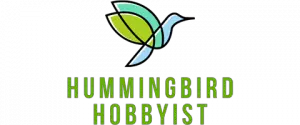Hummingbirds are highly effective pollinators and play an important role in pollinating many plants across North America. Hummingbirds evolved together with the plants over 22 million years ago and today they both enjoy a powerful pollination process. Hummingbirds are believe to have been descendant from another small avian species.
Hummingbird pollinators are all around the US, helping plants exchange genetic material. The evolution of hummingbird pollinators followed the changes in plants. Both hummingbirds and plants enjoy a special kind of symbiosis. The birds help the plants exchange various genetic materials, and plants offer more pollen to birds as a food source. Check out how it all works.
Table of Contents
The Evolution of Hummingbirds
Hummingbirds exist predominantly in the western hemisphere, from the Northern tip of US, even as far north as Canada and Alaska, all the way down to the various countries of South America. This bird species accounts for over 261 different types of hummingbirds living from Alaska to Chile. More of them are located around the tropics than in other temperature zones.
Modern species of hummingbirds came to be around 22 million years ago. Today’s North American hummingbirds are migratory, and their range includes enormous distances. For example, the rufous hummingbird (Selasphorus Rufus) travels roughly 3,900 miles and has the longest documented migration path. On the other hand, a common resident bird – the ruby-throated hummingbird is located all around the US. It migrates from Central Mexico to the US and Canada.
Through their evolutions, they’ve gone through several adaptations. The most important one was related to the hummingbird bills. At first, hummingbirds ate gnats and other insects, but eventually, their beaks evolved, following the native plants. Today, hummingbirds are known pollinators. Here’s how the process works.

Hummingbird Pollination of Flowering Plants
There are several ways for hummingbirds to pollinate flowers. The pollination process is almost always the consequence of using different flowers as food sources. For example:
- Simple disruption — knocking pollen grains inside a single flower they visit and eat from
- Bill transfer — sticky pollen gets onto the hummingbird’s bill and then transferred around
- Contact with deep blooms — flowers have long stamens and tall anthers which contain the pollen that sticks to the bird’s feathers
Maintaining the Ecosystem of Native Plants
Hummingbirds play an essential role in maintaining the ecosystem of native plants. They tend to visit one plant multiple times, which helps with pollination. Hummingbirds are so efficient in pollinating native plants that many plants evolved and switched solely to hummingbird visitors.
Unfortunately, hummingbirds are highly dependent on their environment and sensitive to climate change. Additionally, some people plant non-native plants. This disrupts the garden ecology and ecosystem, which deters hummingbirds away from native sources.
How to Help Hummingbird Populations
If you wish to help hummingbirds stay around, the best thing to do is create a hummingbird garden. A backyard designed for hummingbirds will help with their natural pollination process and provide them with additional food and water sources.
Take some time to learn which native flowers the hummingbirds like. Then plant those around the garden to attract hummingbirds. Add enough vertical layers for easy access to flowers. Make sure to grow different types, as hummingbirds like variety.
Avoid using harsh chemicals which may hurt the birds. Instead, let hummingbirds eat the insects away. Offer them sugar water in hummingbird feeders, which tend to attract even more visitors to your yard. Finally, include a bird bath as a water source; you should see more hummingbirds around soon.

What Is the Pollination Process?
Hummingbirds are highly effective pollinators and important to today’s biodiversity. Their long beaks help them deeper into the flowers they’re eating from. While they’re inside, their feathers will collect the pollen. Then, they will transfer the pollen to the next flower they visit, hundreds of them multiple times every hour. They can also spread the pollen with their wings, which creates a lot of movement and turbulence.
What Are the Benefits of Hummingbird Pollination?
There are several benefits to hummingbird pollination. Most North American hummingbirds are migratory, meaning they cover great distances yearly. This helps spread out the pollen even to the plants that aren’t nearby at the moment of pollination.
Additionally, hummingbirds help with cross-pollination and maintaining a diverse plant population. With cross-pollination, each plant species gets a set of unique genes. With bees being endangered species, hummingbirds might be the key to successful pollination in the areas where bees are low in numbers.
What Are Some of the Plants Hummingbirds Pollinate?
The hummingbird-pollinated plants have specific characteristics. For example, they’re bright in color, usually red, yellow, or orange. These flowers are also scentless or have a mild scent. The flower shape is usually long and narrow, tubular, so birds can easily stick their beak inside. Finally, hummingbird flowers have more pollen to offer than some other plants. These flowers are:
- bee balm
- cardinal flower
- perennials
- annuals
- trees
- shrubs
- vines
Final Word
Hummingbirds are so successful in pollination that some plants evolved only for hummingbird pollination. These birds have long beaks, and pollen can easily attach to their feathers and bills and get spilled around. There are multiple benefits to hummingbird pollination, and chances are these birds will soon help the bees in the process.

